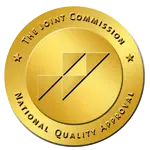Holistic methods of treatment are mindful of the effects spiritual, mental, and physical health has on one another. This method usually lends itself to treatment options that are a combination of both traditional and non-traditional treatments. Using a variety of treatments allows treatment plans to be more flexible and tailored to your needs. This can be achieved through a biopsychosocial approach.
Unlike a medical approach that relies mostly on physical factors, the biopsychosocial approach understands that illness and disease are related to many factors. This approach considers your experience of symptoms when evaluating you for a medical diagnosis. Generally, the three factors considered in a biopsychosocial approach are as follows:
In addiction recovery facilities for inpatient or outpatient treatment, clinicians use the biopsychosocial approach as a type of holistic method for evaluating and treating substance abuse. This means that mental health professionals look at more than your behavior when they evaluate you and consider all three facts of the biopsychosocial model. Each factor contributes to your well-being, meaning all factors must be considered equally.
This philosophy often lends itself to integrated treatment that uses both traditional and non-traditional approaches. Holistic, non-traditional approaches may include treatments that focus on physical health, relaxation techniques, or a mindful perspective.
Holistic methods are used in biopsychosocial health to treat a person’s mental, physical, and spiritual health. These methods can be modified to fit into a person’s day-to-day life. For instance, a person might attend a yoga class once a week or implement breathwork strategies to navigate distressing situations.
Different types of holistic methods will target different aspects of your health. Some exercises target physical health, while others target emotional management or relaxation. There are various types of holistic methods of treatment, from artistic to outdoorsy. Finding one that works for you is a matter of trial and error.
Learning how to control your breath can help you facilitate relaxation. Breathwork can serve as a form of control. You may not be able to control many things in life, but you can exercise control over your breath. Breathwork is often paired with meditation and yoga. The combination of breathwork and reciting mantras can give you better control of your thoughts. Breathwork combined with movement can strengthen the connection between your mind and body.
The practice of mindfulness can be found in traditional therapies and complementary treatments. Mindfulness is a philosophy, perspective, and lifestyle choice. Practicing mindfulness means incorporating tools and techniques in your life that will keep you present. Four mindfulness practices include:
Meditation is a common technique for practicing mindfulness. Some guided meditations are called mindfulness meditation and take after a form of Buddhist meditation called Vipassana. Mindfulness meditation encourages you to focus on sensory images and bodily sensations. Pulling your focus away from intense emotions and irrational thoughts allows you to process your experiences without judgment.
Mindfulness, meditation, breathwork, and movement can all be combined in a yoga session. There are many different types of yoga. Some forms of yoga may emphasize meditation, breathwork, or strengthening more than others. The combination of yoga poses and breathwork can help you feel a greater connection with your body.
Yoga practices require you to listen to your body’s needs. It allows you to push yourself but also understand your physical limitations. Meditation and mindfulness can be involved in mantras, chanting, or guided relaxation to encourage you to be aware of the effects a yoga session has on your body.
Stress management can be accomplished through biofeedback sessions. Biofeedback can train you to better manage stress by giving you a sense of control over internal body processes. Through the use of a monitor, biofeedback allows you to visually see some of your inner body processes. This monitor brings awareness of the physiological relationship to stress which helps you control these bodily functions. Some monitored bodily functions may include:
Using a holistic approach to treat substance abuse means addressing not just withdrawal and substance abuse symptoms but also the underlying causes of these symptoms through cognitive-behavioral therapy (CBT), dialectical behavior therapy (DBT), and complementary treatments. Underlying causes could include traumatic experiences, toxic behavioral habits or thoughts, and chronic mental and physical illnesses. The biopsychosocial approach involves treatment options that work to understand the biological, social, and psychological factors that lead to the abuse of substances.
Holistic methods for substance abuse treatment can help treat the root cause of your addiction and not just mitigate surface-level substance use symptoms. Pathways Recovery Center uses a biopsychosocial approach to ensure all our clients are given coping strategies for biological, psychological, and social factors contributing to their substance abuse. We provide a variety of holistic treatment options, such as biofeedback and yoga, so that we can create a treatment plan that is tailored to your recovery needs. By treating all parts of you, we strive to help you reach wellness. If you or someone you know is struggling with substance abuse, call (888) 771-0966 to learn more about how Pathways Recovery Center can help you.








